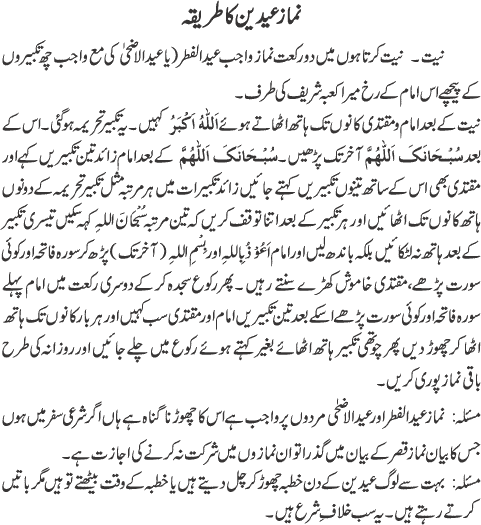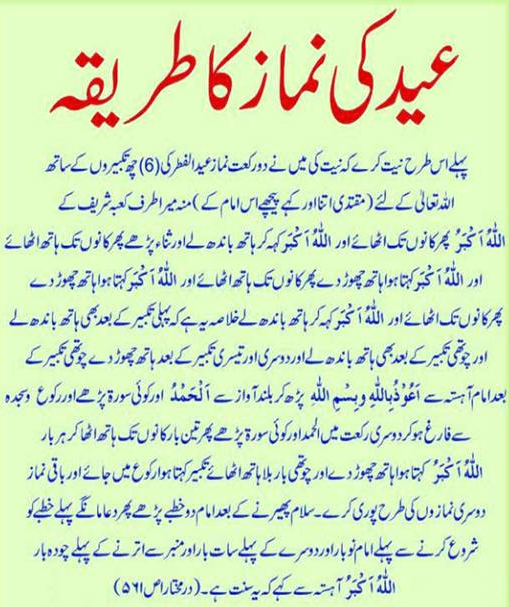On this page, we provide all the details about Eid Ul Azha Ki Namaz Ka Tarika: Islamic practices, culture, and spirituality. Additionally, this article includes step-by-step instructions and offers valuable insights. At Eid ul Adha Namaz, our mission is to educate and assist in understanding its rituals and significance so you can perform them with reverence and confidence. Let our comprehensive guide be your resource in performing the Eid ul Adha Namaz prayer with excellence! Follow step-by-step instructions to enjoy an effective and reverent prayer experience on Eid ul Adha (the Festival of Sacrifice), celebrated worldwide by Muslims as part of the Eid festivities. It commemorates Prophet Ibrahim (AS) offering up his son in obedience to Allah and Eid Namaz prayers are performed en masse throughout Eid ul Adha festivities to remember this historic event and give meaning and spiritual significance.
Eid Ul Azha Ki Namaz Ka Tarika | Complete Guide Line
Eid Ul Adha Namaz ka Tarika in Urdu
In reality most Muslims are aware of how many rakaats are included in the Eid ul Adha prayer. If you’re not sure how many rakaats there are in Eid ul Adha prayer by Hanafi and Shafi? in the next article. In the next article, we will cover the rakaats in relation to Hanafi as well as Shafi. You can do a check above to check the takbeers count in both Raksaats. In addition, we will to talk about the way of performing the Salah in Urdu that you can read in the section below. There are many who prefer reading in Urdu to understand the significance for Eid ul Adha. This is why we decided to provide the event in Urdu form to our readers. Therefore, it is important to know about the process for this Namaz.
Step-by-Step Guide to Perform Eid ul Adha Namaz
First Takbeer
When the Imam initiates the prayer by saying the first Takbeer, raise both hands up to your ears with palms facing forward. Hold your hands at ear level and join them together. Begin the prayer by reciting the SANA (“subhanakallahumma”), acknowledging the greatness of Allah.
Step 2: Second Takbeer
Upon the Imam’s recitation of the second Takbeer, raise your hands as you did in the first step, and then lower them by your sides. This step marks the transition to the next part of the prayer.
Step 3: Third Takbeer
Similarly, when the Imam says the third Takbeer, repeat the hand gesture described in the previous steps. Lower your hands after the Takbeer.
Step 4: Fourth Takbeer
When the Imam recites the fourth Takbeer, raise your hands to your ears once more, and then clasp them together in front of your chest. Maintain this position throughout the remaining steps.
Step 5: Follow the Imam in the First Rak’at
Now, follow the Imam’s lead as he begins the first Rak’at. Perform the prayer as you would in any other prayer, reciting the necessary Surahs and following the movements of the Imam.
Step 6: Transition to the Second Rak’at
After completing the first Rak’at, the Imam will start the second Rak’at. Join him and continue the prayer by following the same pattern as before.
Step 7: The Final Takbeers
During the second Rak’at, when the Imam recites the first, second, third, and fourth Takbeers, follow the same hand gestures as outlined in steps 1 to 4. However, in the fourth Takbeer, proceed directly to the Rukoo (the bowing position) without raising your hands to your ears.
Step 8: Complete the Remaining Rak’ats
Once the Imam finishes the Takbeers, complete the remaining Rak’ats of the prayer by following the Imam’s lead, reciting the necessary Surahs, and performing the required movements.
Importance of Khutba (Sermon) after Eid ul Adha Namaz
After completing the prayer, it is essential to listen to the Khutba (sermon) delivered by the Imam. The Khutba holds significant educational and spiritual value, offering guidance, reminders, and reflections on the teachings of Islam. Attending the Khutba completes the Eid ul Adha prayer experience and deepens your understanding of this blessed occasion.
Check Also: How To Pray Ishraq Importance of Sunrise Prayer In Islam
Summary
Performing Eid ul Adha Namaz is a sacred and integral part of Eid celebrations. By following the step-by-step instructions provided in this guide, you can perform the prayer with sincerity and devotion. Remember, Eid ul Adha is not only a time for festivities but also a time for reflection,
FAQs
What is Eid Ul Azha?
Eid ul Adha is an important Islamic festival observed worldwide by Muslims to remember Prophet Ibrahim (Abraham)’s willingness to sacrifice his son as an act of obedience to God and honor this festival of sacrifice – also referred to as the “Festival of Sacrifice.”
What is the Significance of Eid Ul Azha Namza?
Eid ul Adha Namaz holds great significance among Muslims as an integral component of Eid celebrations. Congregated prayer services held each morning of Eid are conducted as an act of expression of thanks and seeking Allah’s blessings; additionally, it serves as a reminder of Prophet Ibrahim’s devotion and obedience to His commands.
Are There Rakats in Eid-ul Adha Namaz?
Eid ul Adha namaz consists of two rakats (units), performed in congregation, that follow a prescribed pattern of saying Allahu Akbar and reciting Allahu Akbar by imams.


